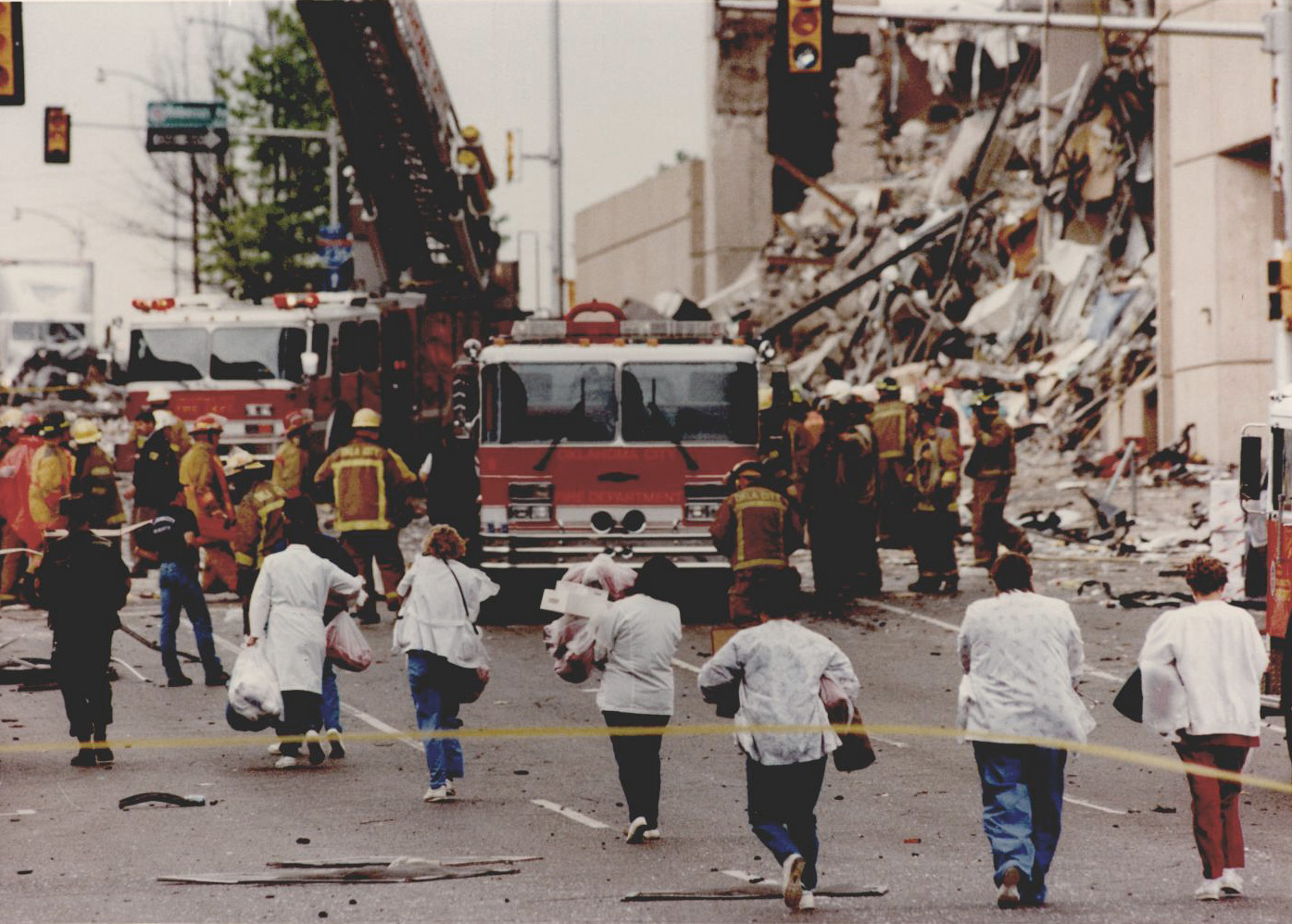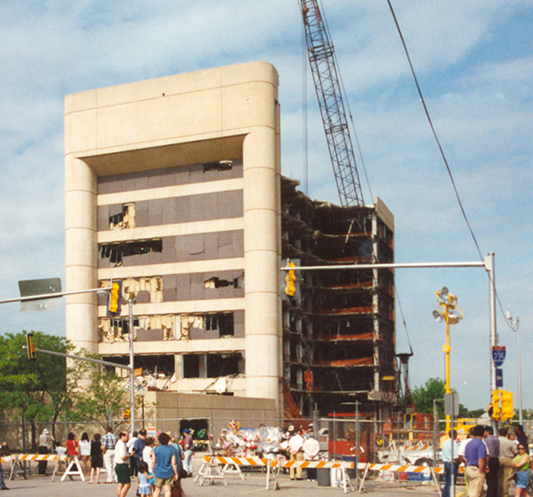
The Oklahoma City Bombing (1995)
Overview
On April 19, 1995, a devastating bombing targeted the Alfred P. Murrah Federal Building in Oklahoma City, Oklahoma, USA. The attack was carried out by Timothy McVeigh, with assistance from Terry Nichols, as an act of domestic terrorism. The explosion claimed 168 lives, injured over 600 people, and caused widespread destruction, making it one of the deadliest acts of domestic terrorism in U.S. history.
How It Happened
Timothy McVeigh, a former U.S. Army soldier, carried out the bombing in retaliation for the U.S. government’s handling of events such as the 1993 Waco Siege and the 1992 Ruby Ridge incident, which he viewed as overreach and tyranny.
McVeigh and Nichols built the bomb using a Ryder rental truck packed with approximately 4,800 pounds of ammonium nitrate fertilizer, nitromethane, and other chemicals. On the morning of April 19, McVeigh parked the truck outside the Alfred P. Murrah Federal Building, which housed various federal agencies and was bustling with activity. At 9:02 AM, McVeigh detonated the bomb remotely.
The massive explosion destroyed a significant portion of the nine-story building, caused extensive damage to surrounding structures, and shattered windows across a 16-block radius. The blast created a crater 30 feet wide and caused nearly $650 million in damages.

Impacts of the Attack
- Casualties:
- 168 people were killed, including 19 children from a daycare center located in the building.
- Over 600 individuals were injured, many suffering severe burns, fractures, and lacerations.
- Destruction:
- The Alfred P. Murrah Federal Building was reduced to rubble, and nearby buildings sustained significant structural damage.
- The explosion led to the displacement of hundreds of families and businesses in the affected area.
- Psychological Impact:
- The attack shocked the nation, raising awareness about domestic terrorism and its devastating consequences.
- Memorials and tributes to the victims became a cornerstone for healing and remembrance.
- Political and Security Changes:
- The attack led to the introduction of stricter anti-terrorism laws, including the Antiterrorism and Effective Death Penalty Act of 1996.
- Security measures at federal buildings across the U.S. were significantly enhanced to prevent similar attacks.

Legacy
The Oklahoma City bombing profoundly impacted the U.S., highlighting the dangers of domestic terrorism. It sparked widespread discussions about extremism and the need for vigilance against threats from within.
In 2000, the Oklahoma City National Memorial & Museum was established on the bombing site to honor the victims, survivors, and first responders. The memorial includes a reflecting pool, 168 empty chairs symbolizing the lives lost, and a Survivor Tree that stands as a testament to resilience and hope.
Source: Historical records and official investigations into the Oklahoma City bombing.